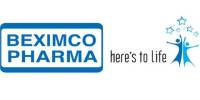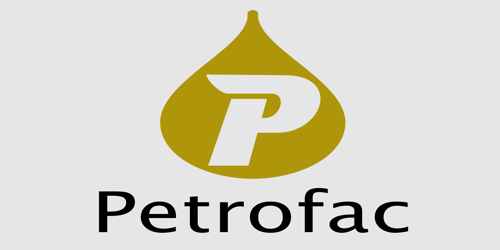Introduction: This internship report presents the findings of the study conducted on GACO Pharmaceuticals to examine the marketing system. This study reveals that GACO Pharmaceuticals products are consumed allover the country and also globally. They try to maintain the quality of the products to cope with the existing competition. With better health care as its objectives, they set reasonable price of their product to enhance their sales and for the convenience of the customer. They follow all possible distribution channels to make their product available to their customer. The study suggest that the company providing the skill, materials and marketing powers that allows the users getting the opportunities to get quality health care products. The study also suggest that the GACO should be increased by which they provide promotional better service in the field of health care. GACO Pharmaceuticals is committed to produce the highest standard of ethical drugs. From the study we find that GACO Pharmaceuticals provides some essential drugs to the poor class people in lump sum price. They are socially responsible, and practice ethical values. GACO Pharmaceuticals has a reputation in helping the unemployed skilled people through providing some jobs. In the study it has appeared that GACO Pharmaceuticals is facing some minor marketing problems. So to overcome these problems GACO Pharmaceuticals will be extending their business rapidly.
2.1 History
The earliest drugstores date back to the Middle Ages. The first known drugstore was opened by Arabian pharmacists in Baghdad in 754,and many more soon began operating throughout the medieval Islamic world and eventually medieval Europe. By the 19th century, many of the drug stores in Europe and North America had eventually developed into larger pharmaceutical companies .
Most of today’s major pharmaceutical companies were founded in the late 19th and early 20th centuries. Key discoveries of the 1920s and 1930s, such as insulin and penicillin, became mass-manufactured and distributed. Switzerland, Germany and Italy had particularly strong industries, with the UK, US, Belgium and the Netherlands following suit.
Legislation was enacted to test and approve drugs and to require appropriate labeling. Prescription and nonprescription drugs became legally distinguished from one another as the pharmaceutical industry matured. The industry got underway in earnest from the 1950s, due to the development of systematic scientific approaches, understanding of human biology (including DNA) and sophisticated manufacturing techniques.
Numerous new drugs were developed during the 1950s and mass-produced and marketed through the 1960s. These included the first oral contraceptive, “The Pill”, Cortisone, blood-pressure drugs and other heart medications. MAO Inhibitors, chlorpromazine (Thorazine), Haldol (Haloperidol) and the tranquilizers ushered in the age of psychiatric medication. Valium (diazepam), discovered in 1960, was marketed from 1963 and rapidly became the most prescribed drug in history, prior to controversy over dependency and habituation.
Attempts were made to increase regulation and to limit financial links companies and prescribing physicians, including by the relatively new US FDA. Such calls increased in the 1960s after the thalidomide tragedy came to light, in which the use of a new tranquilizer in pregnant women caused severe birth defects. In 1964, the World Medical Association issued its Declaration of Helsinki, which set standards for clinical research and demanded that subjects give their informed consent before enrolling in an experiment. Pharmaceutical companies became required to prove efficacy in clinical trials before marketing drugs.
Cancer drugs were a feature of the 1970s. From 1978, India took over as the primary center of pharmaceutical production without patent protection.
The industry remained relatively small scale until the 1970s when it began to expand at a greater rate. Legislation allowing for strong patents, to cover both the process of manufacture and the specific products, came in to force in most countries. By the mid-1980s, small biotechnology firms were struggling for survival, which led to the formation of mutually beneficial partnerships with large pharmaceutical companies and a host of corporate buyouts of the smaller firms. Pharmaceutical manufacturing became concentrated, with a few large companies holding a dominant position throughout the world and with a few companies producing medicines within each country.
The pharmaceutical industry entered the 1980s pressured by economics and a host of new regulations, both safety and environmental, but also transformed by new DNA chemistries and new technologies for analysis and computation. Drugs for heart disease and for AIDS were a feature of the 1980s, involving challenges to regulatory bodies and a faster approval process.
Managed care and Health maintenance organizations (HMOs) spread during the 1980s as part of an effort to contain rising medical costs, and the development of preventative and maintenance medications became more important. A new business atmosphere became institutionalized in the 1990s, characterized by mergers and takeovers, and by a dramatic increase in the use of contract research organizations for clinical development and even for basic R&D. The pharmaceutical industry confronted a new business climate and new regulations, born in part from dealing with world market forces and protests by activists in developing countries. Animal Rights activism was also a problem.
Marketing changed dramatically in the 1990s, partly because of a new consumerism. The Internet made possible the direct purchase of medicines by drug consumers and of raw materials by drug producers, transforming the nature of business. In the US, Direct-to-consumer advertising proliferated on radio and TV because of new FDA regulations in 1997 that liberalized requirements for the presentation of risks. The new antidepressants, the SSRIs, notably Fluoxetine (Prozac), rapidly became bestsellers and marketed for additional disorders.
Drug development progressed from a hit-and-miss approach to rational drug discovery in both laboratory design and natural-product surveys. Demand for nutritional supplements and so-called alternative medicines created new opportunities and increased competition in the industry. Controversies emerged around adverse effects, notably regarding Vioxx in the US, and marketing tactics. Pharmaceutical companies became increasingly accused of disease mongering or over-medicalizing personal or social problems.
There are now more than 200 major pharmaceutical companies, jointly said to be more profitable than almost any other industry, and employing more political lobbyists than any other industry. Advances in biotechnology and the human genome project promise ever more sophisticated, and possibly more individualized, medications.
2.2 Research and development
Drug discovery is the process by which potential drugs are discovered or designed. In the past most drugs have been discovered either by isolating the active ingredient from traditional remedies or by serendipitous discovery. Modern biotechnology often focuses on understanding the metabolic pathways related to a disease state or pathogen, and manipulating these pathways using molecular biology or Biochemistry. A great deal of early-stage drug discovery has traditionally been carried out by universities and research institutions.
Drug development refers to activities undertaken after a compound is identified as a potential drug in order to establish its suitability as a medication. Objectives of drug development are to determine appropriate Formulation and Dosing, as well as to establish safety. Research in these areas generally includes a combination of in vitro studies, in vivo studies, and clinical trials. The amount of capital required for late stage development has made it a historical strength of the larger pharmaceutical companies.
Often, large multinational corporations exhibit vertical integration, participating in a broad range of drug discovery and development, manufacturing and quality control, marketing, sales, and distribution. Smaller organizations, on the other hand, often focus on a specific aspect such as discovering drug candidates or developing formulations. Often, collaborative agreements between research organizations and large pharmaceutical companies are formed to explore the potential of new drug substances.
2.2.1 The cost of innovation
Drug discovery and development is very expensive; of all compounds investigated for use in humans only a small fraction are eventually approved in most nations by government appointed medical institutions or boards, who have to approve new drugs before they can be marketed in those countries. Each year, only about 25 truly novel drugs (New chemical entities) are approved for marketing. This approval comes only after heavy investment in pre-clinical development and clinical trials, as well as a commitment to ongoing safety monitoring. Drugs which fail part-way through this process often incur large costs, while generating no revenue in return. If the cost of these failed drugs is taken into account, the cost of developing a successful new drug (New chemical entity or NCE), has been estimated at about 1 billion USD(not including marketing expenses). A study by the consulting firm Bain & Company reported that the cost for discovering, developing and launching (which factored in marketing and other business expenses) a new drug (along with the prospective drugs that fail) rose over a five year period to nearly $1.7 billion in 2003.
These estimates also take into account the opportunity cost of investing capital many years before revenues are realized (see Time-value of money). Because of the very long time needed for discovery, development, and approval of pharmaceuticals, these costs can accumulate to nearly half the total expense. Some approved drugs, such as those based on re-formulation of an existing active ingredient (also referred to as Line-extensions) are much less expensive to develop. The consumer advocacy group Public Citizen suggests on its web site that the actual cost is under $200 million, about 29% of which is spent on FDA-required clinical trials. For me-too-drugs and for generics, the cost are even less.
Calculations and claims in this area are controversial because of the implications for regulation and subsidization of the industry through federally funded research grants.
2.2.2 Controversy about drug development and testing
There have been increasing accusations and findings that clinical trials conducted or funded by pharmaceutical companies are much more likely to report positive results for the preferred medication.
In western countries generally the law allows pharmacy companies to withhold information from research that they do not wish to disclose and the usual procedure is that several research programmes are carried out and only the most favorable ones are published.[citation needed] In response to public outcry about specific cases in which unfavorable data from pharmaceutical company-sponsored research was suppressed, the Pharmaceutical Research and Manufacturers of America have published new guidelines urging companies to report all findings and limit the financial involvement in drug companies of researchers.
Drug researchers not directly employed by pharmaceutical companies often look to companies for grants, and companies often look to researchers for studies that will make their products look favorable. Sponsored researchers are rewarded by drug companies, for example with support for their conference/symposium costs. Lecture scripts and even journal articles presented by academic researchers may actually be ‘ghost-written’ by pharmaceutical companies.[10] Some researchers who have tried to reveal ethical issues with clinical trials or who tried to publish papers that show harmful effects of new drugs or cheaper alternatives have been threatened by drug companies with lawsuits.
2.3 Product approval in the US
In the United States, new pharmaceutical products must be approved by the FDA as being both safe and effective. This process generally involves submission of an Investigational new drug filing with sufficient pre-clinical data to support proceeding with human trials. Following IND approval, three phases of progressively larger human clinical trials may be conducted. Phase I generally studies toxicity using healthy volunteers. Phase II can include Pharmacokinetics and Dosing in patients, and Phase III is a very large study of efficacy in the intended patient population.
A fourth phase of post-approval surveillance is also often required due to the fact that even the largest clinical trials cannot effectively predict the prevalence of rare side-effects. Post-marketing surveillance ensures that after marketing the safety of a drug is monitored closely. In certain instances, its indication may need to be limited to particular patient groups, and in others the substance is withdrawn from the market completely. Questions continue to be raised regarding the standard of both the initial approval process, and subsequent changes to product labeling (it may take many months for a change identified in post-approval surveillance to be reflected in product labeling) and this is an area where congress is active.
The FDA provides information about approved drugs at the Orange Book site. In the UK, the British National Formulary is the core guide for pharmacists and clinicians.
2.3.1 Orphan drugs
There are special rules for certain rare diseases (“orphan diseases”) involving fewer than 200,000 patients in the United States, or larger populations in certain circumstances. [15] Because medical research and development of drugs to treat such diseases is financially disadvantageous, companies that do so are rewarded with tax reductions, fee waivers, and market exclusivity on that drug for a limited time (seven years), regardless of whether the drug is protected by patents.
2.3.2 Legal issues
Where pharmaceutics have been shown to cause side-effects, civil action has occurred, especially in countries where tort payouts are likely to be large. Due to high-profile cases leading to large compensations, most pharmaceutical companies endorse tort reform. Recent controversies have involved Vioxx and SSRI antidepressants.
2.4 Industry revenues
For the first time ever, in 2006, global spending on prescription drugs topped $643 billion, even as growth slowed somewhat in Europe and North America. The United States accounts for almost half of the global pharmaceutical market, with $289 billion in annual sales followed by the EU and Japan.(pdf) Emerging markets such as China, Russia, South Korea and Mexico outpaced that market, growing a huge 81 percent.
US profit growth was maintained even whilst other top industries saw slowed or no growth.[15] Despite this, “..the pharmaceutical industry is — and has been for years — the most profitable of all businesses in the U.S. In the annual Fortune 500 survey, the pharmaceutical industry topped the list of the most profitable industries, with a return of 17% on revenue.”
Pfizer’s cholesterol pill Lipitor remains the best-selling drug in the world for the fifth year in a row. Its annual sales were $12.9 billion, more than twice as much as its closest competitors: Plavix, the blood thinner from Bristol-Myers Squibb and Sanofi-Aventis; Nexium, the heartburn pill from AstraZeneca; and Advair, the asthma inhaler from GlaxoSmithKline.
IMS Health publishes an analysis of trends expected in the pharmaceutical industry in 2007, including increasing profits in most sectors despite loss of some patents, and new ‘blockbuster’ drugs on the horizon.
Teradata Magazine predicted that by 2007, $40 billion in U.S. sales could be lost at the top 10 pharma companies as a result of slowdown in R&D innovation and the expiry of patents on major products, with 19 blockbuster drugs losing patent.
2.4.1 Sales leaders
The top ten pharmaceutical companies by 2006 sales are:
| Rank | Company | Sales ($m) | Growth (%) | Market Share (%) |
| 1 | Pfizer | 45,983 | 1.8 | 7.3 |
| 2 | GlaxoSmithKline | 37,034 | 9.7 | 5.9 |
| 3 | Sanofi-Aventis | 35,638 | 5.0 | 5.7 |
| 4 | Novartis | 28,880 | 18.0 | 4.6 |
| 5 | Hoffmann–La Roche | 26,596 | 21.8 | 4.2 |
| 6 | AstraZeneca | 25,741 | 10.5 | 4.1 |
| 7 | Johnson & Johnson | 23,267 | 4.2 | 3.7 |
| 8 | Merck & Co. | 22,636 | 2.8 | 3.6 |
| 9 | Wyeth | 15,683 | 2.4 | 2.5 |
| 10 | Eli Lilly and Company | 14,814 | 7.5 | 2.4 |
NB The top 25 Pharmaceutical Company lists produced by Wood-Mackenzie for the years 2004-2006 can be found at: http://www.p-d-r.com/ranking/ranking/ on the P-D-R website.
2.4.2 Patents and generics
Depending on a number of considerations, a company may apply for and be granted a patent for the drug, or the process of producing the drug, granting exclusivity rights typically for about 20 years.[22] However, only after rigorous study and testing, which takes 10 to 15 years on average, will governmental authorities grant permission for the company to market and sell the drug.Patent protection enables the owner of the patent to recover the costs of research and development through high profit margins for the branded drug. When the patent protection for the drug expires, a generic drug is usually developed and sold by a competing company. The development and approval of generics is less expensive, allowing them to be sold at a lower price. Often the owner of the branded drug will introduce a generic version before the patent expires in order to get a head start in the generic market.
2.4.3 Medicare Part D
In 2003 the United States enacted the Medicare Prescription Drug, Improvement, and Modernization Act (MMA), a program to provide prescription drug benefits to the elderly and disabled. This program is a component of Medicare (United States) and is known as Medicare Part D. This program, set to begin in January 2006, will significantly alter the revenue models for pharmaceutical companies. Revenues from the program are expected to be $724 billion between 2006 and 2015.
Pharmaceuticals developed by biotechnological processes often must be injected in a physician’s office rather than be delivered in the form of a capsule taken orally. Medicare payments for these drugs are usually made through Medicare Part B (physician office) rather than Part D (prescription drug plan).
2.5 Developing world
The role of pharmaceutical companies in the developing world is a matter of some debate, ranging from those highlighting the aid provided to the developing world, to those critical of the use of the poorest in human clinical trials, often without adequate protections, particularly in states lacking a strong rule of law. Other criticisms include an alleged reluctance of the industry to invest in treatments of diseases in less economically advanced countries, such as malaria; Criticism for the price of patented AIDS medication, which could limit therapeutic options for patients in the Third World, where the most people have AIDS.
Under World Trade Organization rules, a developing country has options for obtaining needed medications under compulsory licensing or importation of cheaper versions of the drugs, even before patent expiration (WTO Press Release). Pharmaceutical companies often offer much needed medication at no or reduced cost to the developing countries. Proposals to allow the manufacture of generic AIDS drugs are not without controversy; it is sometimes claimed that this might cause pharmaceutical companies to move away from AIDS drug research and focus their research on other, more profitable areas. In March of 2001, South Africa was sued by 41 pharmaceutical companies for their Medicines Act, which allowed the import and generic production of cheap AIDS drugs. The case was later dropped after protest around the world.
2.5.1 Nigerian clinical trial
In 1996, a pediatric clinical trial conducted on behalf of Pfizer tested the antibiotic Trovan allegedly without first obtaining the informed consent of participants or their parents.
2.5.2 Charitable programmes
Charitable programs and drug discovery & development efforts are routinely undertaken by pharmaceutical companies. Some examples include:
“Merck’s Gift,” wherein billions of River Blindness drugs were donated in Africa
Pfizer’s gift of free/discounted fluconazole and other drugs for AIDS in South Africa
GSK’s commitment to give free albendazole tablets to the WHO for, and until, the elimination of lymphatic filariasis worldwide.
In 2006, Novartis committed USD 755 million in corporate citizenship initiatives around the world, particularly focusing on improved access to medicines in the developing world through its Access to Medicine projects, including donations of medicines to patients affected by leprosy, tuberculosis, and malaria; Glivec patient assistance programmes; and relief to support major humanitarian organisations with emergency medical needs.
2.6 Industry associations
European Federation of Pharmaceutical Industries and Associations (EFPIA)
European Pharmaceutical Market Research Association (EphMRA)
International Federation of Pharmaceutical Manufacturers and Associations (IFPMA)
Japan Pharmaceutical Manufacturers Association (JPMA)
New York Health Products Council (NYHPC)
Pharmaceutical Research and Manufacturers of America (PhRMA)
Irish Pharmaceutical Healthcare Association (IPHA)
Regulatory authorities
International Conference on Harmonisation of Technical Requirements for Registration of Pharmaceuticals for Human Use (ICH)
European Medicines Agency (EMEA)
Food and Drug Administration (FDA)
Ministry of Health, Labour and Welfare (Japan)
Medicines and Healthcare products Regulatory Agency (MHRA)
Central Drugs Standards Control Organisation (India) CDSCO
Ukrainian Drug Registration Agency
















